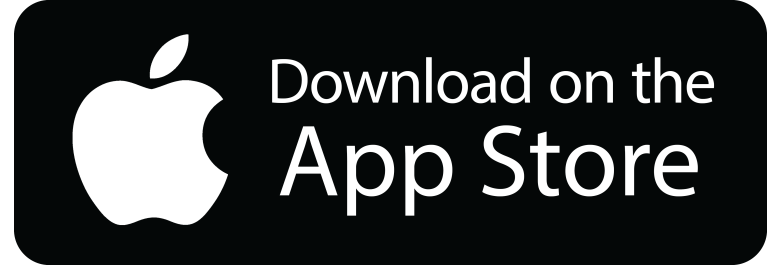Total Addressable Market (TAM)
The TAM is the maximum demand for a product or service within a given market. In our example, the TAM for a fast-food chain would be the worldwide fast-food restaurant market. This is the total market demand that your business could potentially tap into if you were present in every country and had no competition. While the TAM provides a broad understanding of the market opportunity, it's often not a realistic measure of potential sales as it doesn't account for factors such as competition, market saturation, or affordability.
Serviceable Available Market (SAM)
SAM is the portion of the TAM that is realistically available to your business based on your business model. In our fast-food chain example, we might narrow down our SAM to two specific cities. To determine the SAM, we would estimate the demand for fast food in these cities based on factors such as the population, their food habits, and the revenues generated by fast-food restaurants in other cities with similar demographics. SAM gives us a more realistic estimate of our market opportunity than the TAM as it considers factors specific to our business.
Serviceable Obtainable Market (SOM)
SOM is the percentage of the SAM that you can realistically capture based on your business strategy. In our example, we might estimate that we can capture 20% of the SAM in our two target cities. This percentage would be based on factors such as the location and number of our restaurants, our marketing and advertising strategies, and the competition in the market. The SOM provides a more accurate estimate of our potential sales than the TAM or SAM as it considers the specifics of our business and the market.
While TAM, SAM, and SOM are useful metrics for understanding your market potential, there are other metrics you can use to analyse your market and measure your success. Here are a couple:
Customer Acquisition Cost (CAC)
CAC is the cost of acquiring a new customer. This metric is especially important for businesses with high customer churn rates or those in competitive markets. In our example, if our business spends £50 to acquire a new customer, and our average customer spends £25 per visit, we would need to see at least two visits per customer to break even on our customer acquisition cost.
Customer Lifetime Value (CLV)
Once these factors are determined, the CLV can be calculated by multiplying the average purchase value by the purchase frequency, then multiplying the result by the customer lifespan, and finally multiplying the result by the gross margin. By understanding the CLV of their customers, businesses can identify which customers are most valuable and focus their marketing and retention efforts on those customers. This can help to increase customer loyalty and drive long-term profitability for the business.
Knowing your market share is important for several reasons:
The TAM is the maximum demand for a product or service within a given market. In our example, the TAM for a fast-food chain would be the worldwide fast-food restaurant market. This is the total market demand that your business could potentially tap into if you were present in every country and had no competition. While the TAM provides a broad understanding of the market opportunity, it's often not a realistic measure of potential sales as it doesn't account for factors such as competition, market saturation, or affordability.
Serviceable Available Market (SAM)
SAM is the portion of the TAM that is realistically available to your business based on your business model. In our fast-food chain example, we might narrow down our SAM to two specific cities. To determine the SAM, we would estimate the demand for fast food in these cities based on factors such as the population, their food habits, and the revenues generated by fast-food restaurants in other cities with similar demographics. SAM gives us a more realistic estimate of our market opportunity than the TAM as it considers factors specific to our business.
Serviceable Obtainable Market (SOM)
SOM is the percentage of the SAM that you can realistically capture based on your business strategy. In our example, we might estimate that we can capture 20% of the SAM in our two target cities. This percentage would be based on factors such as the location and number of our restaurants, our marketing and advertising strategies, and the competition in the market. The SOM provides a more accurate estimate of our potential sales than the TAM or SAM as it considers the specifics of our business and the market.
While TAM, SAM, and SOM are useful metrics for understanding your market potential, there are other metrics you can use to analyse your market and measure your success. Here are a couple:
Customer Acquisition Cost (CAC)
CAC is the cost of acquiring a new customer. This metric is especially important for businesses with high customer churn rates or those in competitive markets. In our example, if our business spends £50 to acquire a new customer, and our average customer spends £25 per visit, we would need to see at least two visits per customer to break even on our customer acquisition cost.
Customer Lifetime Value (CLV)
- CLV is the
total amount of money a customer will spend with your business over their
lifetime. This metric is important for understanding the long-term
profitability of your business. In our example, if the average customer visits
our restaurant twice per month and spends £25 per visit, their annual value to
our business would be £600. If the average customer lifespan is three years,
then their CLV would be £1,800.
To calculate CLV, businesses need to consider the
following factors:
- Average
purchase value:
The average amount of money that a customer spends on a purchase. - Purchase
frequency:
The number of times a customer makes a purchase in a given period. - Customer
lifespan:
The length of time that a customer remains a customer. - Gross
margin:
The amount of money a business makes on each sale, minus the cost of goods sold.
Once these factors are determined, the CLV can be calculated by multiplying the average purchase value by the purchase frequency, then multiplying the result by the customer lifespan, and finally multiplying the result by the gross margin. By understanding the CLV of their customers, businesses can identify which customers are most valuable and focus their marketing and retention efforts on those customers. This can help to increase customer loyalty and drive long-term profitability for the business.
Knowing your market share is important for several reasons:
Competitive analysis: Market share allows you to measure your success relative to your competitors. By understanding how much of the market you control, you can identify your position within your industry and determine whether you need to make changes to your business strategy to remain competitive.
Growth opportunities: Market share also provides insights into potential growth opportunities for your business. If your market share is small, there may be opportunities to expand your business and capture more of the market. Conversely, if your market share is large, you may need to focus on maintaining your position and defending against competitors.
Marketing and advertising: Market share can also inform your marketing and advertising strategies. By understanding the preferences and behaviors of your target audience, you can create targeted campaigns that resonate with your customers and help you capture a larger share of the market.
Investor relations: Finally, market share is an important metric for investors and stakeholders. A strong market share can demonstrate the potential for long-term profitability and growth, which can be attractive to investors and support the overall health of your business.
Understanding your market potential is crucial to creating a successful business strategy. TAM, SAM, and SOM are key metrics that can help you estimate your potential sales. While these metrics provide a useful starting point, it's important to supplement them with other metrics such as CAC and CLV to understand your business's performance and profitability.
By tracking these metrics over time, you can refine your business strategy and make data-driven decisions that drive growth and success.
If you've enjoyed this article, this course is of interest.
Understanding your market potential is crucial to creating a successful business strategy. TAM, SAM, and SOM are key metrics that can help you estimate your potential sales. While these metrics provide a useful starting point, it's important to supplement them with other metrics such as CAC and CLV to understand your business's performance and profitability.
By tracking these metrics over time, you can refine your business strategy and make data-driven decisions that drive growth and success.
If you've enjoyed this article, this course is of interest.
Write your awesome label here.
Never miss our news!
Thank you!
Get updates on live streams, news and more right in your mailbox.



